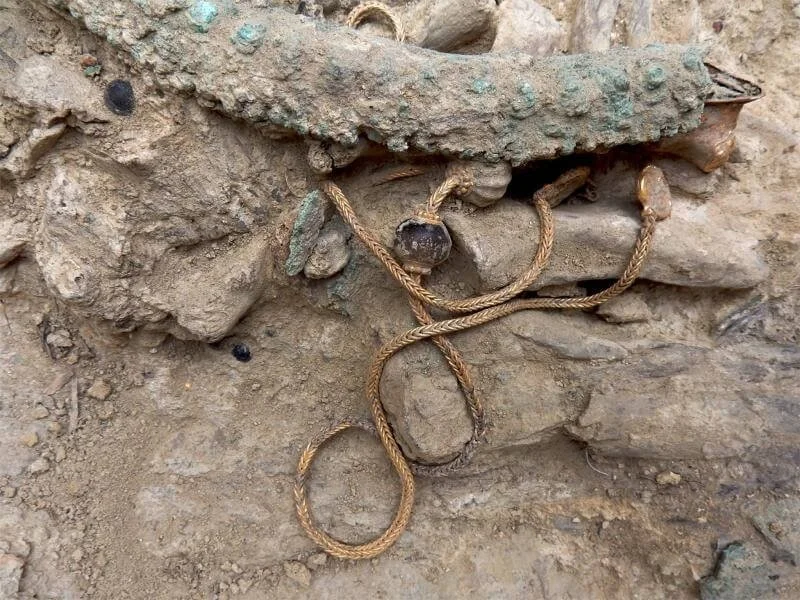The ancestor of the present CRISPR offers fresh perspectives on its history and the potential of genetic modification.
A team of Spanish scientists has recreated a CRISPR-Cas gene editing system that existed 2.6 billion years ago, an achievement they refer to as a "resurrection."
The research, which was published in Nature Microbiology, not only provides a deeper understanding of how bacteria first developed this potent gene editing tool, but it may also help create improved versions.
The team was able to develop functioning copies of the historic Cas proteins capable of cutting DNA in the present day by examining old CRISPR sequences and reproducing them in the laboratory.
Francis Mojica, a researcher from the University of Alicante who was a member of the study, said that the findings represent an incredible gain in understanding of the development of CRISPR-Cas systems.
Researchers at the University of Utrecht in the Netherlands, led by Mojica and Ruud Jansen, were the first to realize that the enigmatic CRISPR system in bacteria can function like a set of genetic shears, slicing DNA.
According to Mojica, the findings may contribute in the improvement of current CRISPR procedures and point to new avenues for the development of others.
The Spanish team has delved into the history of these bacteria as scientists seek Earth's microbes for fresh CRISPR candidates.
Describing CRISPR: The battle between bacteria, one of the most basic, well-adapted, and effective forms of life, and viruses, which are so basic they hardly qualify as living things at all, has been going on for billions of years invisibly.
Because viruses can't reproduce on their own, they must take control of other living things like bacteria in order to survive. So it should come as no surprise that bacteria have to create defense mechanisms.
A type of immune system among them is CRISPR, which uses a protein called Cas to combat viruses that reappear by keeping DNA records of prior infections. By cleaving the viral DNA when it comes in contact with the specific virus, Cas shields the bacterium from infection.
Researchers have used that ability to selectively cut DNA as a gene editing tool for a variety of creatures. CRISPR is being used in a wide range of industries, from gene editing plants and animals to fighting sickle cell disease and high cholesterol in people. It has shown to be an incredibly adaptable instrument.
In essence, we're reaping the rewards of a long-ago weapons race.
CRISPR's "origin and evolution are poorly understood," the authors concluded in their paper, despite the fact that it has undergone widespread adaptation.
Ancient Cas proteins were revived in contemporary labs to try and better understand that genesis and evolution, according to a team led by research professor Rául Pérez-Jiménez of CIC nanoGUNE.
Pérez-Jiménez's research team at nanoGUNE has been reassembling genes and proteins from extinct creatures for years to investigate the evolution of proteins like Cas and determine whether they may be used as cutting-edge biotech tools.
They used firmicutes, a class of bacterium that went extinct billions of years ago, to study ancient CRISPR-Cas sequences.
The researchers employed computer modeling to hopscotch their way back in time starting with different bacterial genomes that are currently known and moving forward towards their common ancestor. The scientists rebuilt the ancestor CRISPR sequences and then manufactured them in the lab to examine and evaluate whether they were functional. They discovered that the ancient Cas proteins were just as sharp as their contemporary counterparts.
As explained by researcher Llus Montoliu of the Rare Diseases Networking Biomedical Research Center (CIBERER), "What is surprising is that we can revive Cas proteins that must have existed billions of years ago and find that they already had the capacity to operate as gene editing tools at that time. We have now confirmed that by successfully editing genes in human cells.
Using a link to the past, the researchers was able to conclude that CRISPR-Cas systems have evolved over time, becoming more complicated as they have had to adapt to new viral threats – an example of the arms race.
Old weapons, new uses: CRISPR is a potent tool, but it isn't perfect.
According to Pérez-Jiménez, these contemporary, sophisticated CRISPR systems have evolved to become extremely specialized for use inside bacteria. The immune system may reject it when it is employed to modify human cells, and "molecular restrictions" hinder its use.
Oddly enough, some of these limitations vanish in ancestor systems, giving these systems more flexibility for novel applications, according to Pérez-Jiménez. The ancient Cas proteins may be a more adaptable alternative because they are less refined than contemporary options.
The resurrected ancient proteins "can make available gene editing tools with properties different from the current ones, and which are much more flexible," according to nanoGUNE researcher Ylenia Jabalera.
This could imply "new directions in the manipulation of DNA and the treatment of diseases like ALS, cancer, and diabetes, or even in the development of diagnostic tools for diseases."







